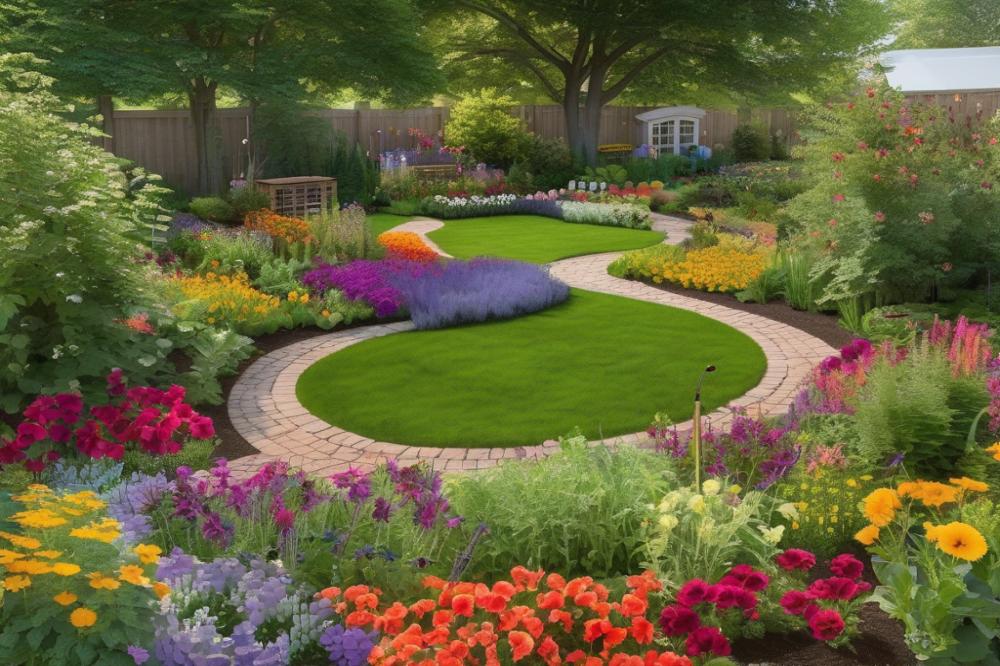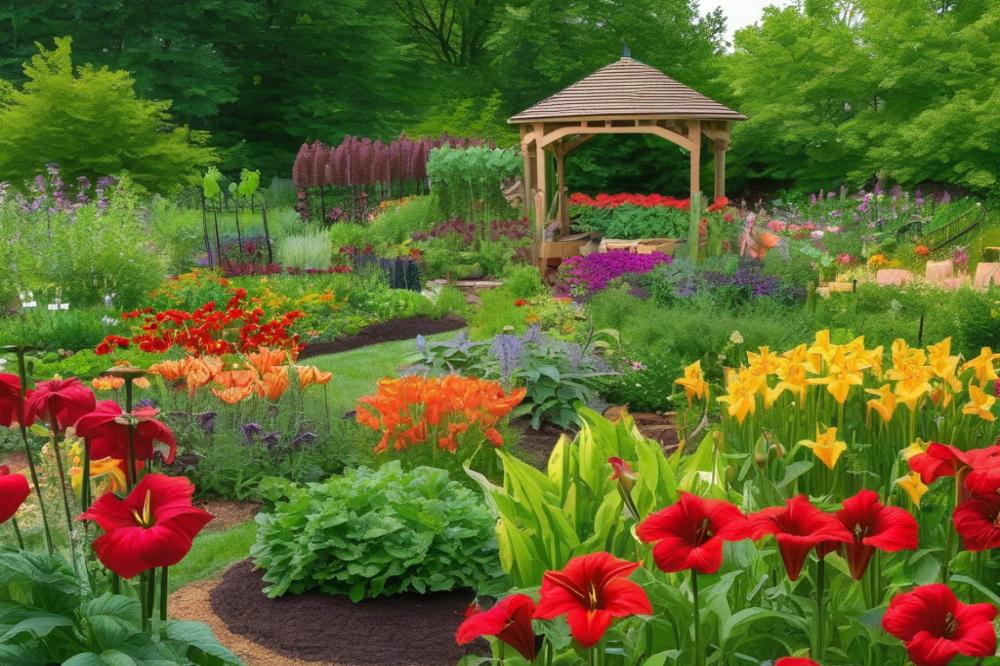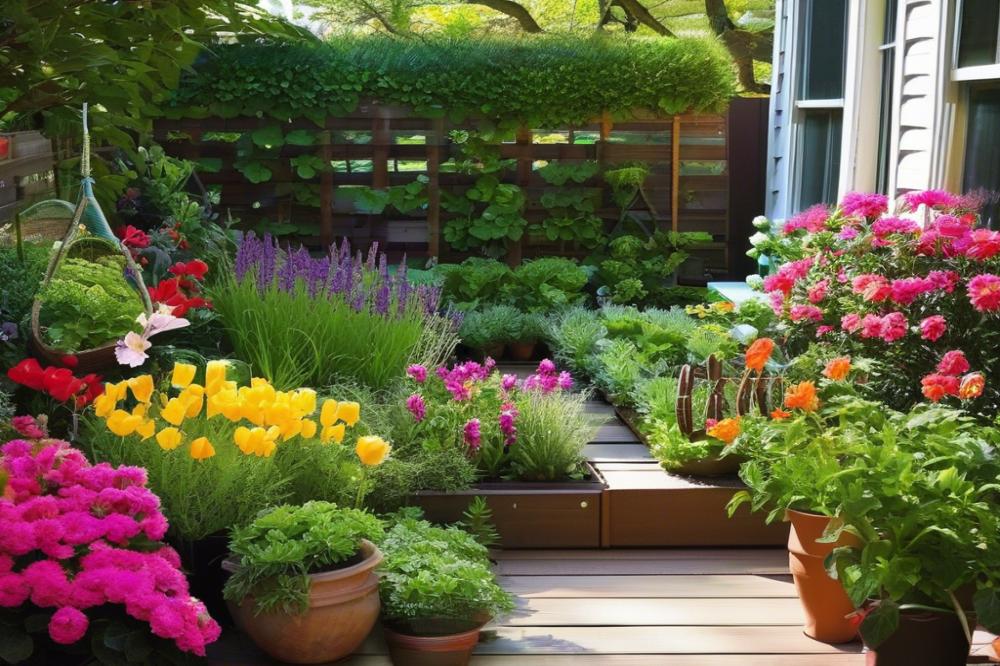Creating a pollinator-friendly vegetable garden
pollinators play a vital role in our ecosystems, especially in gardens filled with vegetables. Bees, butterflies, and other insects are crucial for the process of fertilization. Their activities enhance the productivity of many plants, directly affecting the yield we enjoy. A healthy vegetable garden thrives with these remarkable creatures buzzing and fluttering about.
Supporting biodiversity is essential for maintaining healthy ecosystems. Different species of pollinators contribute to the overall balance of nature. By inviting these beneficial insects into our spaces, we also foster a more vibrant community of plants and wildlife. Ever thought about how a simple flower can attract a whole host of bees or butterflies? That small action can create a giant ripple effect, benefiting your garden immensely.
Designing a garden that caters to these essential insects doesn’t have to be complicated. A focus on native plants, which are adapted to the local environment, can provide crucial nectar sources. These flowers bloom at different times, offering a continuous supply of food during the growing season. Consider incorporating companion planting as well; certain plants can help each other thrive while making the space more inviting to pollinators.
Sustainable gardening practices, including organic gardening, will also help create a more robust environment for these insects. By reducing the use of pesticides and chemicals, you can protect their habitats. This means healthier plants and vegetables, along with a happier ecosystem. The benefits of a pollinator-friendly garden are clear—it’s a step towards a sustainable future in vegetable cultivation.
Nurturing your garden to support pollinators isn’t just good for them; it’s beneficial for you too. Enjoy fresher produce, a more vibrant garden, and the satisfaction of contributing to your local biodiversity. Embrace these practices and watch your vegetable garden flourish!
Understanding Pollinators


Pollinators play a crucial role in gardening. They are animals and insects that help plants reproduce by transferring pollen from one flower to another. This process is vital for the production of many fruits, vegetables, and seeds we rely on for food. Just think about how many of your favorite vegetables depend on these creatures for growth!
Bees are among the most important pollinators. There are many species, including honeybees and bumblebees. They are attracted to various flowers and are particularly fond of native plants. Butterflies also contribute significantly to this process. They flit from bloom to bloom, collecting nectar and inadvertently spreading pollen along the way. Hummingbirds can’t be overlooked either; they are excellent at pollinating plants while feeding on nectar sources. These amazing animals make your garden vibrant and productive.
Healthy pollinators are essential for successful vegetable cultivation. When populations of these crucial species decline, it directly affects the yield of your garden. Less pollination means fewer fruits and vegetables. This is not just a problem for gardeners; it also impacts biodiversity. A decline in pollinator health can lead to fewer plant varieties, which disrupts healthy ecosystems.
Creating a pollinator-friendly garden begins with understanding the needs of these unique creatures. Providing diverse nectar sources helps attract them. Consider planting companion plants that bloom at different times throughout the growing season. This keeps food available for pollinators year-round. Sustainable gardening practices can also aid their well-being. Avoiding harmful chemicals while practicing organic gardening creates a safer habitat for these essential animals.
To encourage pollinators, focus on planting native plants in your garden. They are often more appealing to local pollinator species than non-native varieties. Native plants are well adapted to local environments, supporting biodiversity and strengthening your garden’s ecosystem.
Choosing Native Plants


Native plants play a vital role in creating a thriving vegetable garden. They naturally attract local pollinators, which are essential for successful gardening. Using these plants helps promote biodiversity, ensuring a healthier ecosystem right in your backyard. You don’t just get beautiful blooms; you also provide a rich habitat for various insects and birds.
Some popular native plants to consider include coneflowers, asters, and milkweed. These species are known for their ability to draw in bees, butterflies, and other important pollinators. Each of these plants offers valuable nectar sources, making them an excellent addition to your garden. When pollinators visit your plants, they also help improve the yields of your vegetables.
When selecting native plants, consider companion planting. Certain species can provide shade, while others might deter pests. This creates a dynamic gardening environment. Aim for a mix of flowers and herbs that bloom at different times throughout the growing season. This diversity will help keep pollinators coming back for more.
Think about your local climate and soil conditions when choosing plants. Not all native plants thrive equally in every area. Research what grows best in your region, and don’t be afraid to ask local gardening clubs or extension services for advice. These resources can provide recommendations tailored to your specific needs.
Integrating native plants into your vegetable cultivation can also promote sustainable gardening practices. By choosing plants that are well-adapted to your area, you will require fewer resources like water and fertilizers. This approach makes organic gardening easier and more effective. Native plants provide a self-sustaining system that benefits both you and the environment.
In summary, planting native species is a straightforward path toward enhancing your garden’s health. Your efforts will not go unnoticed by local wildlife. These plants create a welcoming environment for pollinators, ensuring a successful and productive vegetable garden.
Companion Planting for Pollinators


Companion planting is a gardening technique where different plants are grown close together. This method can be exceptionally beneficial for attracting pollinators. By creating diverse habitats, these plants provide vital nectar sources and improve the overall health of your garden.
Consider combining vegetables with specific flowers that appeal to pollinators. For instance, plant tomatoes alongside marigolds. Marigolds attract bees and help deter harmful pests. Another great pair is basil and borage. Borage not only attracts bees but also enhances the flavor of basil.
Incorporating native plants into your vegetable garden can also boost biodiversity. Native flowers are well-adapted to the environment and provide reliable food sources for local pollinators. For example, plant coneflowers next to your zucchini. This combination supports butterflies while enhancing overall garden beauty.
These practices align with sustainable gardening principles. Planting a variety of species can reduce pests naturally and promote organic gardening methods. This reduces the need for chemical interventions, creating a healthier environment for both plants and wildlife.
Using companion planting effectively contributes to creating a vibrant ecosystem. Pollinators thrive when they have plenty of options. By choosing the right combinations, gardeners can boost biodiversity and strengthen their vegetable cultivation efforts.
Gardeners should always consider the needs of pollinators. The right flower-vegetable pairings enrich the garden experience. They also help cultivate a space that benefits both plants and the lively pollinators that visit.
Creating Habitat and Shelter


Providing habitat for pollinators is essential in the success of your vegetable garden. These crucial creatures, such as bees and butterflies, play a critical role in the pollination of many plants. When you design your garden, think about ways to make it welcoming for them.
One effective method is to leave areas of bare soil. This simple act can create a nesting site for ground-nesting bees. They prefer sandy or well-drained soils where they can burrow and lay their eggs. Allowing portions of your garden to remain undisturbed supports biodiversity and boosts the local pollinator population.
Another excellent approach involves planting hedgerows. These dense plantings act as natural windbreaks and provide cover for various wildlife. Select native plants for this purpose, as they attract more local pollinators. A hedgerow filled with flowers offers abundant nectar sources throughout the growing season.
Adding nesting structures can enhance your garden further. Consider placing bee hotels or small wooden blocks with drilled holes. These features offer safe spaces for solitary bees, ensuring they have places to thrive. Pairing these structures with companion planting will also increase the diversity of plants, drawing in even more beneficial insects.
Designing a sustainable gardening layout requires thought. Cluster different flowers and vegetables to create microhabitats. These groupings encourage pollinators to visit for food while they help with vegetable cultivation. A garden rich in both flowering plants and vegetables provides a feast for pollinators year-round.
Finally, using organic gardening practices contributes to a healthier environment for these essential creatures. Avoiding pesticides and herbicides protects their populations. By making conscious choices, you help create a thriving ecosystem that supports not just your garden, but the entire landscape.
Incorporating Nectar Sources
Planting nectar-rich flowers alongside your vegetables can make a big difference in attracting pollinators. A well-designed garden enhances biodiversity and creates a vibrant habitat. Strategic placement of these plants turns ordinary vegetable plots into buzzing gardens full of activity.
Consider using native plants that thrive in your area. They often require less maintenance and provide food for local bees, butterflies, and other important pollinators. Selecting flowers with diverse bloom times will keep your garden lively from spring through fall. Aim for a mix of early, mid, and late-flowering plants. This approach guarantees that pollinators have something to forage on all season long.
Some excellent nectar sources include coneflowers, zinnias, and marigolds. These flowers not only look beautiful but also pair wonderfully with vegetables. For example, marigolds can deter pests while providing a feast for bees. When you implement companion planting, both flowers and veggies benefit.
Locate your nectar sources near vegetable plants. This arrangement encourages pollinators to visit your garden more frequently. Additionally, planting in clusters increases visibility, allowing more pollinators to find their way to the blooms. A mix of colors and heights adds visual appeal while supporting sustainable gardening efforts.
Many gardeners may not realize that herbs like basil, dill, and thyme also provide vital food sources. Flowering herbs attract various beneficial insects, promoting a healthy ecosystem. As the season progresses, allow some herbs to bolt and flower. Doing this creates more nectar sources while providing different layers of habitat.
Organic gardening practices can further enhance your garden’s health. Avoid pesticides, which can harm both pollinators and your crops. Favoring natural pest control methods helps sustain the balance in your garden.
By incorporating well-chosen flowers, you’ll create a thriving space for both vegetables and pollinators. Planting for continuous bloom ensures your garden remains an appealing destination for various friendly insects. This arrangement contributes both to your gardening goals and the greater ecosystem.
Sustainable and Organic Gardening Practices
Creating a garden that supports pollinators is essential for overall ecosystem health. Sustainable gardening practices play a vital role in this effort. Emphasizing organic methods helps minimize harm to these crucial creatures. Avoiding chemical pesticides is a key step. Pesticides can have harmful effects on bees, butterflies, and other beneficial insects.
Start by enriching the soil naturally. Utilize compost and organic fertilizers to nourish your garden. Healthy soil translates to stronger plants, which in turn provide an abundance of nectar sources. Choosing to grow native plants is another way to attract a variety of pollinators. These plants have evolved alongside local wildlife, making them ideal for your garden’s ecosystem.
Consider companion planting as a strategy. This technique involves grouping compatible plants together. Not only does it boost plant health, but it also provides diverse habitats for various pollinators. Mixing flowering plants with vegetables enhances the attractiveness of your garden. Bright blooms can draw in bees and butterflies, ensuring they thrive in your space.
Maintaining biodiversity is crucial. Each plant contributes to the overall health of the garden. Diverse plants attract a wider range of pollinators. Thus, a well-planned garden can become a haven for these essential insects. Keep in mind that a healthy ecosystem is a balanced ecosystem.
Water sources are just as important as food. Including shallow dishes with stones or pebbles gives pollinators a safe place to land and drink. Regular maintenance practices, such as mulching and crop rotation, protect your garden’s health. These methods also reduce the need for synthetic inputs, creating a more resilient environment.
Lastly, be patient. Establishing a thriving garden full of biodiversity takes time. Observe what works and make adjustments as needed. Every small effort counts towards a healthier landscape that supports pollinators. Embrace these organic and sustainable practices to benefit both your vegetable cultivation and the pollinators that help it flourish.
Final Thoughts on a Vegetable Garden that Supports Pollinators
Creating a vegetable garden that welcomes pollinators is vital for success. These amazing creatures play a key role in helping plants reproduce. By incorporating a variety of flowers and plants, you can create a habitat that benefits both your vegetables and local wildlife.
We discussed essential tips, such as planting native species and avoiding harmful pesticides. These practices not only attract helpful insects but also contribute to the overall health of your gardening efforts. When pollinators thrive, so do your crops. That’s a win-win for everyone!
It’s time to put these ideas into action. Start small if you’re new to this. Each step you take will lead to a more sustainable and vibrant garden. The benefits extend beyond just vegetables; a diverse garden fosters a rich ecosystem as well.
By adopting these practices, you’re making a difference. Supporting pollinators means supporting your garden’s growth and enjoying a more fruitful harvest. Let’s work together to create beautiful spaces where nature and agriculture can coexist harmoniously.



